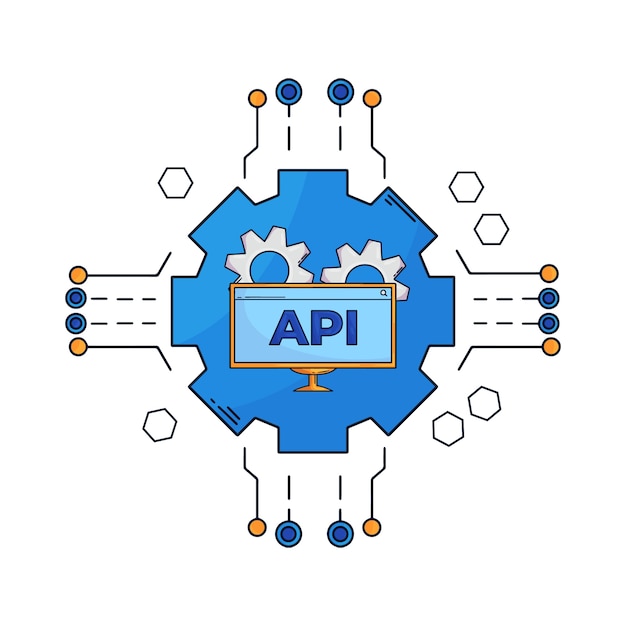Unleashing the Power of Weather Forecast API and Historical Weather API: Building an Auto-Detecting Location Weather App
 Sachin Kumar
Sachin Kumar
Weather forecasting is essential for planning our daily activities and staying prepared for changing weather conditions. By leveraging Weather Forecast API and Historical Weather API, developers can build auto-detecting location weather apps that provide accurate real-time forecasts and access historical weather data. We will explore how these APIs empower developers to create powerful weather apps for users.
Understanding Weather Forecast API
Weather Forecast API is a powerful tool that enables developers to access up-to-date weather forecasts for specific locations. These APIs provide detailed information such as temperature, humidity, precipitation, wind speed, and more. Weather Forecast APIs offer real-time forecast data, allowing users to plan their activities and make informed decisions based on the expected weather conditions.
Exploring Historical Weather API
Historical Weather API grants developers access to historical weather data for a specified location and timeframe. This API is immensely helpful for conducting climate analysis, studying weather patterns, and understanding long-term trends. By tapping into historical weather data, developers can offer users insights into past weather conditions, facilitating better decision-making and research.
Steps to Build an Auto-Detecting Location Weather App Using Weather Forecast API and Historical Weather API
Let's delve into the steps involved in constructing an auto-detecting location weather app using Weather Forecast API and Historical Weather API:
Select the APIs: Research and choose reliable Weather Forecast API and Historical Weather API providers. Consider factors such as data accuracy, global coverage, ease of integration, and available features. Popular APIs include OpenWeatherMap, Weatherbit, and Weatherstack, each offering unique benefits to developers.
Obtain API Keys: Sign up with the chosen API providers and obtain API keys. These keys authenticate requests to the APIs and grant access to their features. Keep the API keys secure and adhere to any usage limits defined by the providers.
Implement Auto-Detecting Location: Employ techniques like HTML5 Geolocation, GPS, or IP-based location services to automatically detect the user's location. Accurate location detection is crucial for providing localized weather forecasts.
Weather Forecast API Integration: Utilize the Weather Forecast API to retrieve real-time weather forecasts for the user's location. Construct API requests using the API key, specifying the required parameters such as location and desired forecast duration. Retrieve forecasted information, including temperature, precipitation, wind speed, and more, to display current and future weather conditions.
Historical Weather Data Integration: Employ the Historical Weather API to access past weather data for specific locations and time periods. Construct API requests using the API key, specifying the required parameters such as location and desired timeframe. Retrieve historical weather data to offer users insights into weather patterns, trends, and climate analysis.
User Interface Design: Design an intuitive and visually appealing user interface to display weather information. Incorporate weather icons, charts, and graphs to present forecasted and historical weather data in a user-friendly manner. Consider responsive design principles to ensure a seamless experience across different devices.
Error Handling and Resilience: Implement robust error handling mechanisms to manage situations where API requests fail or weather data is unavailable. Display meaningful error messages to users and consider fallback options such as offering a manual location entry feature.
Performance Optimization: Employ caching mechanisms to minimize API requests and reduce server load. Cache frequently accessed weather data to enhance app performance and provide faster responses to user queries.
Conclusion
By leveraging the power of Weather Forecast API and Historical Weather API, developers can create auto-detecting location weather apps that deliver accurate real-time forecasts and historical weather data. Weather Forecast APIs enable users to plan their activities based on up-to-date weather information, while Historical Weather APIs facilitate climate analysis and offer insights into past weather patterns. By following the steps mentioned above, developers can build user-friendly weather apps that empower users to make informed decisions. Remember to select reliable API providers, implement auto-detecting location mechanisms, and design an intuitive user interface. With these APIs, developers can create weather apps that enhance user experiences and provide valuable weather insights.
Subscribe to my newsletter
Read articles from Sachin Kumar directly inside your inbox. Subscribe to the newsletter, and don't miss out.
Written by
